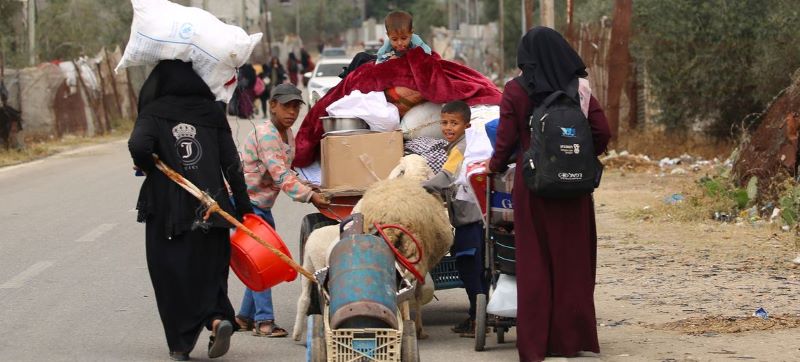 Rafah Crisis
Rafah Crisis
Israel-Hamas crisis: Nearly 800,000 now displaced from Rafah
Roughly 800,000 people have been forced to flee Rafah since Israel launched a military operation in the area on 6 May, the head of UN Palestine refugee agency UNRWA said on Saturday in a renewed appeal for greater protection of civilians in Gaza, safe humanitarian access and, ultimately, a ceasefire.
“Once again, nearly half of the population of Rafah or 800,000 people are on the road,” Commissioner-General Philippe Lazzarini wrote in post on the social media platform X. formerly Twitter.
He said that following evacuation orders demanding people to flee to so-called safe zones, people mainly went to the middle areas in Gaza and Khan Younis, including to destroyed buildings.
No safe passage or protection
“When people move, they are exposed, without safe passage or protection,” he said. “Every time, they have to start from scratch, all over again.”
Lazzarini said the areas that people have escaped to do not have safe water supplies or sanitation facilities.
He cited the example of Al-Mawassi, describing it as “a sandy 14 square kilometre agricultural land, where people are left out in the open with little to no buildings or roads.”
The town, located on Gaza’s southern coast, “lacks the minimal conditions to provide emergency humanitarian assistance in a safe and dignified manner."
He said that more than 400,000 lived in Al-Mawassi before the recent escalation, but now it is “crammed and cannot absorb more people”, which is also the same in Deir al Balah.
'No place is safe'
“The claim that people in Gaza can move to ‘safe’ or ‘humanitarian’ zones is false. Each time, it puts the lives of civilians at serious risk,” Lazzarini stated.
“Gaza does not have any safe zones,” he added. “No place is safe. No one is safe.”
The situation is again being made far worse by the lack of aid and basic humanitarian supplies, he continued, noting that humanitarians do not have any more supplies to give out, including food and other basic items.
Meanwhile, key crossings into Gaza remain closed or are unsafe to access as they are located near or in combat zones. Mr. Lazzarini also highlighted the critical need for fuel, which is essential for aid distribution.
Land routes crucial
He said only 33 aid trucks have made it to southern Gaza since 6 May – “a small trickle amid the growing humanitarian needs and mass displacement.”
“While we welcome reports on first shipments arriving at the new floating dock, land routes remain the most viable, effective, efficient and safest aid delivery method,” he said.
Earlier on Saturday, the UN Spokesperson's Office said the World Food Programme (WFP) confirmed that 10 truckloads of food were transported to its warehouse the previous day via the floating dock, which was installed by the United States military.
“Some of the shipment included high-energy biscuits for WFP to distribute, but there were also commodities for other humanitarian partners to distribute, which included rice, pasta, and lentils,” the note said.
Lazzarini emphasized that the land crossings into Gaza must re-open and be safe to access. ”Without the re-opening of these routes, the deprivation of assistance and catastrophic humanitarian conditions will persist,” he said.
Ceasefire now
He underlined the obligations of the parties to the conflict, starting with rapid and unimpeded passage of humanitarian relief for all civilians in need, wherever they are located.
“The displaced population must have access to basic survival items, including food, water, and shelter, as well as hygiene, health, assistance and above all safety,” he said.
Humanitarian relief teams also need safe and free movement to access people in need, and protection wherever they may be, and the parties are also obligated to protect civilians and civilian objects everywhere.
“Above all, it is time to agree on a ceasefire,” he concluded.
“Any further escalation in the fighting will only wreak more havoc on civilians and make it impossible to finally have the peace and stability that Israelis and Palestinians desperately need and deserve.”
Support Our Journalism
We cannot do without you.. your contribution supports unbiased journalism
IBNS is not driven by any ism- not wokeism, not racism, not skewed secularism, not hyper right-wing or left liberal ideals, nor by any hardline religious beliefs or hyper nationalism. We want to serve you good old objective news, as they are. We do not judge or preach. We let people decide for themselves. We only try to present factual and well-sourced news.





